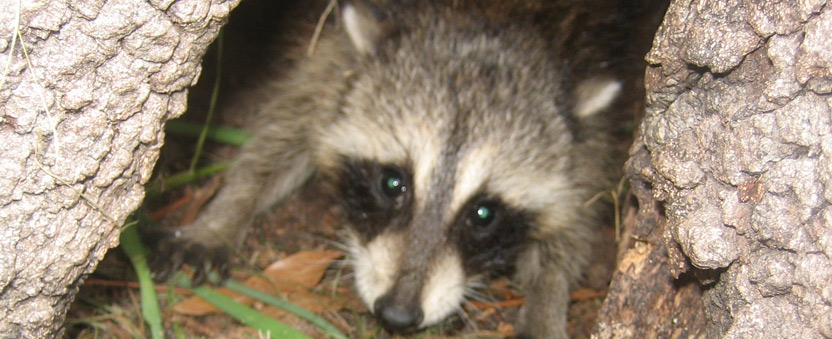NEED LOCAL HELP? We have
wildlife removal professionals servicing 95% of the USA. Click
here to hire a
local raccoon removal expert in your home town. Updated
2018. But read the below advice first!
I want to start by saying that it is definitely not my advice
for you to try and trap a raccoon by yourself. Not only would
this be unsafe for you and possibly illegal in your state, but
there are so many variables involved that chances of failure and
further damage heavily outweigh the chances of you successfully
trapping the raccoon without any hiccups. While I totally
understand why the DIY approach would be appealing to you, after
working for more than two decades in wildlife removal, I can
tell you that it’s not a good idea.

However, it is not my intention for this website to be just a
directory of pest control professionals, I want you to be able
to educate yourself about raccoons by reading these entries, I
want to share my knowledge with you, and that’s why I’ve decided
that do-it-yourself posts also have their place in here.
So, what equipment is needed to trap a raccoon? The answer is
kind of on the nose – a trap. Now, there are dozens and dozens
of raccoon traps available on the market. I would suggest that
you stay away from the cruel ones such as body grip traps or paw
hold traps. The body grip trap is basically a raccoon-sized
version of the common rat trap, and it will kill the raccoon
either by chocking it or by crushing it. The paw hold trap is
equally inhumane, clamping down on the raccoon’s paw,
restricting the animal from running away. This type of trap was
created with the assumption that once the animal is trapped, the
trapper will shoot it.
On top of me not advising you to use any type of lethal trap, I
also want to make a warning here regarding wildlife removal
firms. While all the pros on this site are licensed wildlife
removal experts, not all raccoon removal companies are legal.
Usually, these unlicensed exterminators will use such traps as
the ones mentioned above. They may be in it for the fur or just
for the money they get for their services – in any case, they’re
not as uncommon as you might think.
Learn how to Identify Raccoon Tracks.
The type of trap I and most wildlife control companies use is
the live cage trap. So if you’re set on trapping a raccoon
yourself, this is the kind of trap I recommend. There are a ton
of different models of this type of trap for you to choose from,
so it’s recommended that you do some research before you buy
one. However, they all work on the same system. Put the trap
somewhere near the raccoon’s den, put some bait in the trap, and
wait. The back of the cage contains a trip pan which will shut
the door once the raccoon steps on it.
Sounds pretty easy, right? Well, believe me, so many things can
and probably will go wrong. I’ve seen it all, from trapping a
pet inside, to trapping the wrong raccoon while the wanted one
continues its demolition work on your house, to trapping a
mother raccoon and leaving her young to die of starvation in
your attic or your chimney, to the cage being too small for the
raccoon (no refunds), to the raccoon taking the bait without
triggering the door to shut, to the raccoon escaping and
developing a fear of cages (so it will never enter another cage
trap again), and on, and on, and on.
An experienced professional will know what type of trap to use,
and how to set it so that these complications are avoided and
the trapping is successful.
Go back to the Raccoons in the attic
home page.